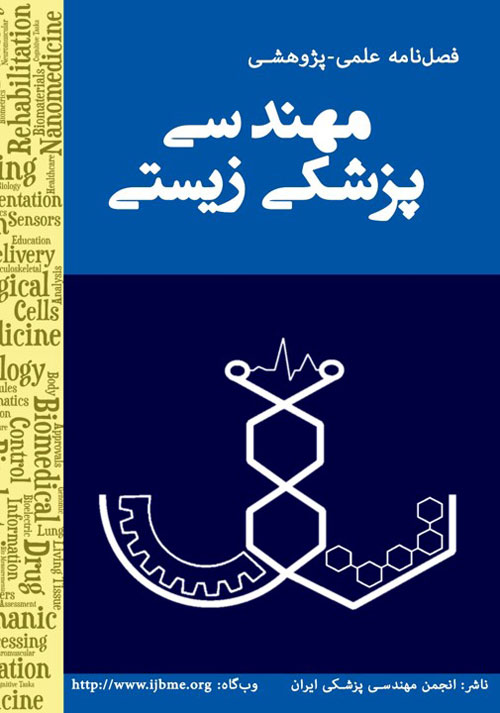مکان یابی کانون های صرع از طریق پردازش EEG-fMRI هم زمان و شناسایی خودکار اینترایکتال از EEG داخل اسکنر
مکان یابی کانون های صرع از طریق پردازش EEG-fMRI هم زمان و شناسایی خودکار اینترایکتال از EEG داخل اسکنر
نویسنده:
الیاس ابراهیم زاده* ، حمید سلطانیان زاده ، بابک نجار اعرابی ، سید سهراب هاشمی فشارکی ، جعفر مهوری
پیام:
چکیده:
به خاطر رزولوشن زمانی خوب EEG و رزولوشن مکانی مناسب fMRI ترکیب اطلاعات هم زمان آنها می تواند بهبود عملکرد مکان یابی را به دنبال داشته باشد. در این مقاله سعی شده با استفاده از اطلاعات این دو مدالیته در یک ثبت هم زمان به مکان یابی کانون های صرعی پرداخته شود. بنابراین نخست از طریق شناسایی وقایع اینترایکتال و میانگین گیری، یک الگوی اسپایکر مستخرج از EEG خارج اسکنر ساخته شده و سپس از طریق اعمال همبستگی متقابل بین این الگو و سیگنال EEG درون اسکنر یک سیستم خودکار به منظور استخراج اطلاعات زمانی لحظه وقوع حادثه طراحی شده است. سپس رگرسور به دست آمده بعد از کانوالو شدن با تابع پاسخ سیستم همودینامیک (HRF) از طریق مدل GLM به مکان یابی کانون های صرعی پرداخته است. مطالعه بر روی ۶ بیمار صرعی موضعی مقاوم به دارو که در آزمایشگاه ملی نقشه برداری مغز از آن ها ثبت داده صورت گرفته انجام پذیرفته است. نتایج روش پیشنهادی با اطلاعات ارائه شده در EEG برای هر ۶ بیمار هماهنگی دارد و از این میان برای ۴ بیمار که کاندید جراحی مغز بودند اطلاعات اضافه ارائه کرده است . نتایج بهبود صحت و دقت مکان یابی نسبت به روش های ارائه شده تاکنون را نشان می دهند.
کلیدواژگان:
مکان یابی ، کانون های صرعی ، ثبت هم زمان EEG-fMRI ، سیگنال BOLD ، مدل GLM
نوع مقاله:
مقاله پژوهشی/اصیل
زبان:
فارسی
انتشار در:
فصلنامه مهندسی پزشکی زیستی، سال سیزدهم شماره ۲ (تابستان ۱۳۹۸)
صفحات:
۱۳۵ -۱۴۶
لینک کوتاه:

Localizing epileptic focus through simultaneous EEG-fMRI recording and automated detection of IED from inside-scanner EEG
Author(s):
Elias Ebrahimzadeh * , Hamid Soltanian , Zadeh , Babak Nadjar Araabi , Seyed Sohrab Hashemi Fesharaki , Jafar Mehvari Habibabadi
Message:
Abstract:
Since electroencephalography (EEG) signal contains temporal information and fMRI carries spatial information, we can reasonably expect that a combination of the two contributes greatly to precise localization of epileptic focuses. With that in mind, we have first extracted spike patterns from outside of scanner EEG, through detecting and averaging the interictal epileptiform discharges (IED). Then, having implemented the correlation between the identified pattern and inside-scanner EEG, an automated system was developed to extract the temporal information when an epileptic seizure is triggered. We proceeded to convolve the obtained regressor with the hemodynamic response function (HRF) using the general linear model (GLM) for the purpose of localizing the epileptic focus. This study was conducted on 6 medication-resistant patients with epilepsy whose data was recorded in the National Brain Mapping Lab (NBML). The results of the proposed method are in line with the information provided in EEG for each of the 6 patients, and for the 4 patients who were candidates for brain surgery, they provided further information. The results suggest a significant improvement in localization accuracy and precision compared to existing methods in the literature.
Keywords:
localization , epileptic focus , simultaneous EEG-fMRI recording , BOLD signal , GLM model
Article Type:
Research/Original Article
Language:
Persian
Published:
Iranian Journal of Biomedical Engineering, Volume:13 Issue: 2, 2019
Pages:
135 - 146
https://www.magiran.com/paper/2018433

